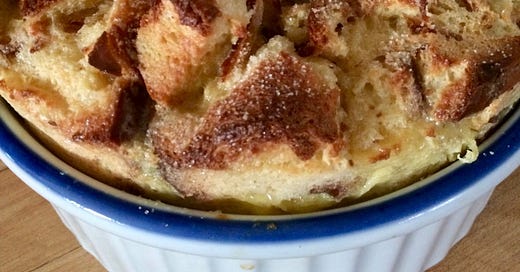MAPLE BREAD PUDDING (recipe follows below)
Once over the hump of March, the days grow noticeably warmer, the birds begin to chip-chip away at the feeders, and there’s a touch of green along the roadsides and at garden edges where the snow crust is rapidly disappearing. Night temps, though, are still below freezing, and that’s when the miracle…
Keep reading with a 7-day free trial
Subscribe to On the Kitchen Porch to keep reading this post and get 7 days of free access to the full post archives.




